The Biology of the Goat
Fasciola hepatica
Liver Fluke
The large liver fluke lives in the bile ducts of many animals including man.
Flukes feed on liver tissue.

The adult fluke contains both male and female reproductive organs.
Eggs enter the duodenum with bile and exit with the feces.
Eggs can survive for several years at very low temperatures in water.
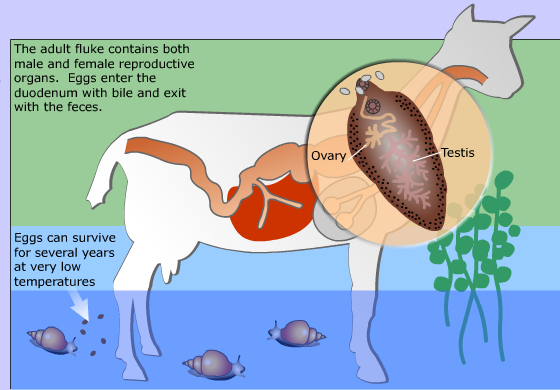
At warm temperatures the eggs hatch in about 10 to 12 days into the first larval stage,
called the miracidium.
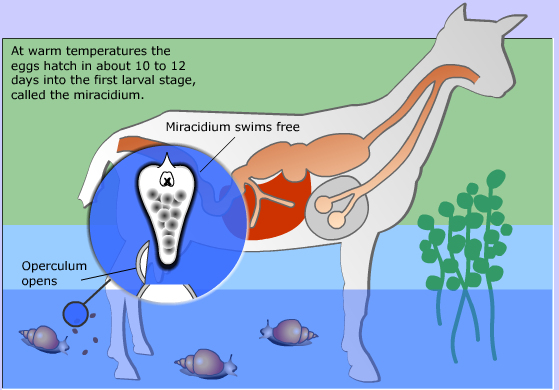
Miracidium can live 24 hours in the water, but must find and penetrate the body of one
of several species of water snail to continue its life cycle.

The miracidium transforms into a mother sporocyst as it enters the snail's body.
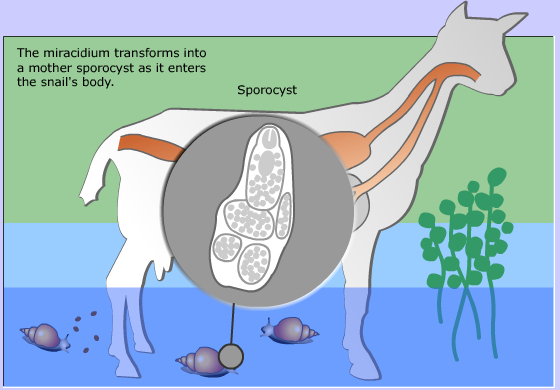
Each sporocyst produces 5 to 8 rediae, the next stage of the life cycle.
Rediae feed on the snail's digestive gland or liver.

Rediae can produce a either a second generation of rediae, or the next stage.
Each redia produce a free swimming stage called a cercaria which leave the snail
4 1/2 to 7 weeks after infection.
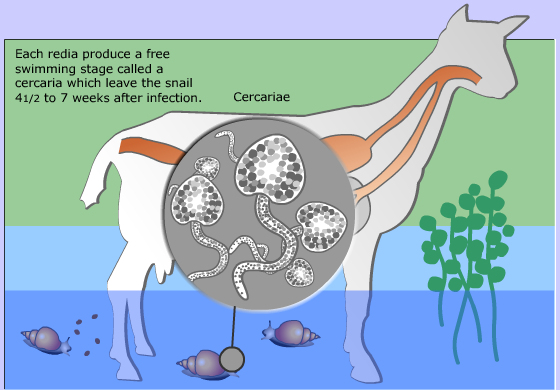
Cercaria settle on plants just below the surface of the water, lose their tale and secrete
a cyst covering. They are now called a metacercaria and are infective.

The goat becomes infected when feeding on plants with encysted metacercaria.
The cysts open in the duodenum and the young fluke travels to the intestine.
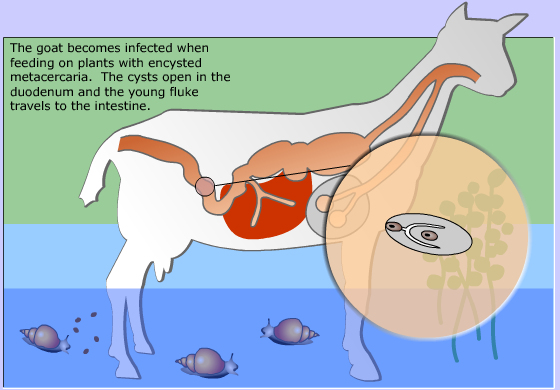
24 hours after infections, the young flukes burrow through the wall of the intestine
and migrate through the peritoneal cavity to the liver.
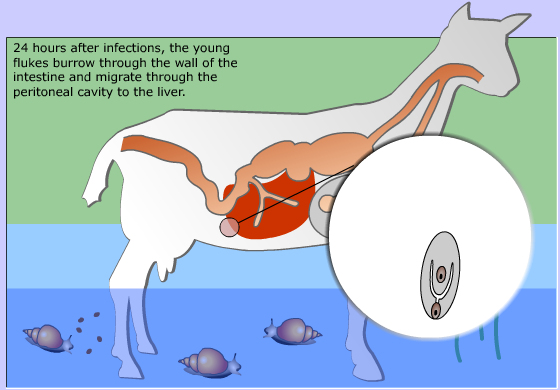
The immature fluke migrates through the liver for 5 to 6 weeks until it arrives in the bile ducts.
This can cause great damage to the liver in large infections.

In another month they reach maturity and begin to lay eggs.
Flukes have been known to live for as long as 11 years in the host,
but usually pass out of the host after 9 months.

Oocyte 130 - 150 µm long X 63-90 µm wide although not seen on floatation.
The operculum (cap) will open in solution and the egg will sink.
Clinical signs
When a large number of immature flukes invade the liver and bile ducts the trauma can cause
liver damage and death. This occurs most commonly at the end of summer,
the most optimal time for cercaria production.
In the more common chronic cases anemia and weight loss occur, often leading to severe anemia
and "bottle jaw".